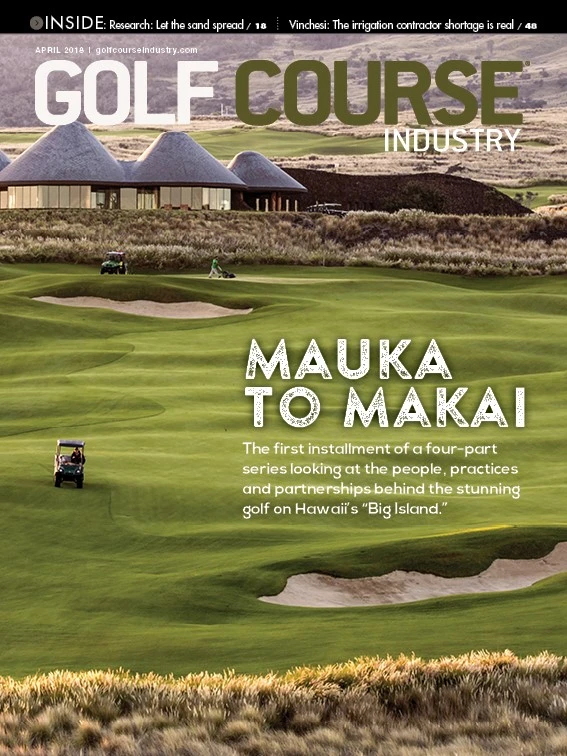The unmistakable surface sheen is testament that the greens have been topdressed. An undeniably important agronomic process for golf course superintendents, it’s also one not entirely appreciated by players.
In fact, 41 percent of members and players complain that sanded greens play poorly, according to turf managers who participated in recent GCI research. Interestingly enough, this trend of unmet expectations is more prevalent at public courses (44 percent report unhappy golfers) versus 37 percent at private courses. Likewise, dissatisfaction was more common with Ultradwarf Bermuda greens (43 percent) than with Poa (42 percent) and Bentgrass (40 percent), according to the data.
During the first quarter of 2018, Golf Course Industry, in partnership with Premier Sand/Hayden Group, created a research project to identify trends regarding top dressing and top-dressing sand used on greens. The survey was administered online via SurveyMonkey.
More than 400 professional turf managers from around the U.S. and Canada completed the survey. As an added incentive to complete the survey, GCI committed to make a substantial donation to the Wee One Foundation, a charity group started in memory of Wayne Otto, CGCS, that helps superintendents and other turf professionals in need. Lastly, in addition to periodic email reminders to take the survey, GCI provided access to the questionnaire via concentrated social media campaign that involved not only the GCI website, but also Facebook and Twitter.
When analyzing the data, GCI editors broke down the findings regionally based on USGA’s boundaries, as well as between public and private courses. In some instances, when appropriate, GCI further broke down data for comparisons of green type, and green turf type.
It’s important to know that 54 percent of turf managers participating in this research worked at public facilities; with 29 percent in the Northeast, 37 percent the Central states, 15 percent Southeast; and 19 percent Western states. These superintendents managed primarily bentgrass (50 percent) push-up (50 percent) greens. Nearly three quarters (70 percent) of respondents were working at financially stable facilities, either breaking event (30 percent) or earning a profit (40 percent). Altogether, respondents indicated they spent about $14,500 annually on topdressing sand.
sponsored by

Click on an image below for a pdf.




WANT MORE?
Enter your email to receive our newsletters.

Explore the April 2018 Issue
Check out more from this issue and find your next story to read.
Latest from Golf Course Industry
- Standard Golf announces new product lineup for 2025
- The Salt Pond taps Troon for management
- KemperSports selected to manage Swansea Country Club
- From the publisher’s pen: Grab that guide
- Introducing our April 2025 issue
- South Carolina leaders honor golf course superintendent
- One and only
- Wild can be good






